calsfoundation@cals.org
Forest Fire Lookouts
aka: Fire Towers
Fire towers (also known as lookouts) go back thousands of years. The oldest lookout still standing is the Tuztoromy Firewatch Tower in Sopron, Hungary, which was built in the thirteenth century and remodeled in 1681. The first one built in America was in downtown Harlem, New York, constructed in 1856 in what is now Marcus Garvey City Park. The first fire lookout strictly for protection of American forests was built in 1902 at Bertha Hill near Headquarters, Idaho. At the height of their use (1930s to 1970s), Arkansas had more than 120 fire towers; by 1994, forty-eight were still standing, and by 2023, there were forty-six. Arkansas has fourteen lookouts on the National Historic Lookout Register and three on the National Register of Historic Places (in addition to one tree that was used as a lookout).
The U.S. Forest Service was created in 1905 to oversee the management of the country’s woodlands. In 1910, a fire called the “Big Blow-Up” burned three million acres in Washington, Idaho, and Montana, killing eighty-seven people in what is believed to be the largest forest fire in recorded U.S. history. As a result of this fire, the Forest Service put in place a new rule: “All fires must be extinguished by 10:00 a.m. the following morning.” Early detection suddenly became a priority.
Prior to 1910, a few fire lookout towers existed, built as early as the 1870s, primarily to protect towns and industrial sites. After the new Forest Service rule, towers emerged nationwide. During the Great Depression, the Civilian Conservation Corps (CCC) built 3,100 towers, including many in the Ouachita and Ozark-St. Francis national forests. The Arkansas Forestry Commission was established by Act 234 in 1931, and it too built many more towers.
Tower watchmen often lived alone in or near the tower and spent the daylight hours scanning the forests for signs of smoke. If they detected a possible fire, they were equipped with a telephone to report it. This was the primary way of detecting fires until the 1960s, when aerial detection became more accurate and easier. In the 1970s, toward the end of the era of fire towers, nearly half of the “towermen” in Arkansas were women.
Towers closed as human presence in forests increased. Road systems expanded into the forests, and more citizens began to report fires, especially with the advent of cell phones. With aerial surveillance (and later, satellites), the need for lookout towers diminished.
At the height of their operation, Arkansas had 122 known fire towers. In 1994, forty-eight still stood, but it is unknown if any were still in use. Arkansas has fourteen lookouts on the National Historic Lookout Register: Bee Mountain Lookout in Polk County, Boat Mountain Lookout Tower in Newton County, Buffalo Tower in Newton County, Compton Lookout in Newton County, Crossroads Fire Tower in Ashley County, Forum Lookout Tower in Madison County, Hardy Lookout Tower in Sharp County, Horn Lookout Tower in Lee County, Pinetree Lookout Tower in St. Francis County, Poison Springs Fire Tower in Ouachita County, Push Mountain Fire Tower in Baxter County, Rich Mountain Fire Tower in Polk County, Sugarloaf Fire Tower in Stone County, and Tall Peak Fire Tower in Polk County. Arkansas also has three towers listed on the National Register of Historic Places: Crossroads Fire Tower (listed in 2006), Sugarloaf Fire Tower Historic District (listed in 1995) and Tall Peak Fire Tower (listed in 1993). Crossroads is the tallest remaining tower at 120 feet. It was originally 100 feet, but, between 1936 and 1943, an additional twenty feet were added to increase its range of view. Also on the National Register is the Look See Tree near the Coleman community of Drew County, a large white oak tree tall enough that it was utilized for some years as a fire tower by the Arkansas Forestry Commission, with climbing pegs and a telephone line installed.
Fire lookouts came in many shapes and designs, with certain types being more popular in different parts of the country. The “L” series began in the West and was the most popular type of lookout. In general, they had a wood-frame “cab” or cabin, most perched atop a pole or timber tower up to 100 feet tall. The most popular type of lookout elsewhere in the country was built by the Aeromotor Company. These were steel towers with four legs and a winding staircase up to the cab. The cab was approximately seven feet by seven feet with windows across all sides and topped with a metal roof. The Crossroads Fire Tower is an Aeromotor tower.
As early as the 1940s, fire towers across the country began to serve another purpose—as tourist attractions. Some of the more popular lookouts welcomed the attention, installing things like soda fountains and concessions and teaching visitors about forest fire prevention. Now that the era of the fire towers has largely passed, the defunct towers have become an offbeat attraction for tourists once again, including some of the remaining towers in Arkansas. Another use of obsolete towers is for radio and television antennas. Some states also put them up for sale, both the towers and the remaining sites where the towers have been removed, sometimes requiring the dismantling of the tower as a condition of the purchase.
For additional information:
“Arkansas Lookouts.” Forest Fire Lookout Association. http://www.firelookout.org/lo-arkansas.html (accessed April 11, 2023).
Blackwell, Elizabeth A. “Arkansas Listings in the National Register of Historic Places.” Arkansas Historical Quarterly 72 (Autumn 2007): 269–276.
“Crossroads Fire Tower.” National Register of Historic Places nomination form. On file at Arkansas Historic Preservation Program, Little Rock, Arkansas. Online at https://www.arkansasheritage.com/arkansas-historic-preservation-program (accessed March 14, 2023).
“Fire ‘Towermen’ Are Mostly Women.” Northwest Arkansas Times, August 13, 1976, p. 7.
“Look See Tree.” National Register of Historic Places nomination form. On file at Arkansas Historic Preservation Program, Little Rock, Arkansas. Online at https://www.arkansasheritage.com/arkansas-historic-preservation-program (accessed March 14, 2023).
Murphy, Michael. “The Rise and Fall of Fire Lookout Towers in Faulkner County: Construction by Company 4748 of the Civilian Conservation Corps, 1937–1939.” Faulkner Facts and Fiddlings 45 (Summer/Fall/Winter 2002): 29–68.
National Historic Lookout Register: Lookouts in Arkansas. http://nhlr.org/lookouts/us/AR (accessed April 17, 2023).
Stair, Bruce. “Fire Lookout Towers.” Cleburne County Historical Society Journal 41 (Summer 2015): 21–24.
“Standard Lookout Designs.” Fire Lookouts of the Northwest. http://firelookouts.com/images/Lookout_Show_n_Tell_2.pdf (accessed April 11, 2023).
“Sugarloaf Fire Tower Historic District.” National Register of Historic Places nomination form. On file at Arkansas Historic Preservation Program, Little Rock, Arkansas. Online at https://www.arkansasheritage.com/arkansas-historic-preservation-program (accessed March 14, 2023).
“Tall Peak Fire Tower.” National Register of Historic Places nomination form. On file at Arkansas Historic Preservation Program, Little Rock, Arkansas. Online at https://www.arkansasheritage.com/arkansas-historic-preservation-program (accessed March 14, 2023).
Winters, S. R. “Fire-Tower Welcomes: Foresters Glad to Have Tourists Visit Their Isolated Lookouts.” New York Times, April 5, 1942, p. 5XX.
Laura Downing
Arkansas State University
 Early Twentieth Century, 1901 through 1940
Early Twentieth Century, 1901 through 1940 Science and Technology
Science and Technology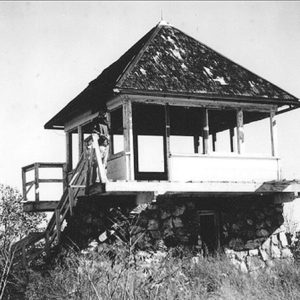 Bee Mountain Lookout
Bee Mountain Lookout  Buffalo Tower Lookout
Buffalo Tower Lookout 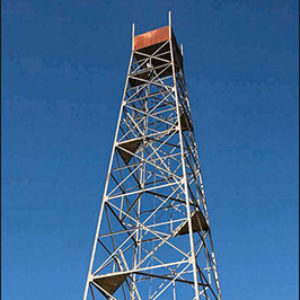 Compton Lookout
Compton Lookout  Crossroad Fire Tower
Crossroad Fire Tower  Fire Tower
Fire Tower 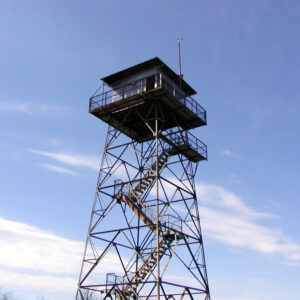 Fire Tower
Fire Tower 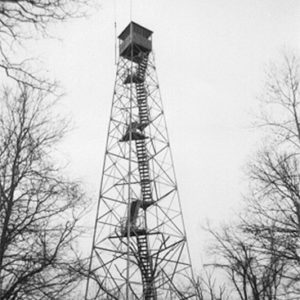 Horn Lookout Tower
Horn Lookout Tower  Poison Spring Fire Tower
Poison Spring Fire Tower 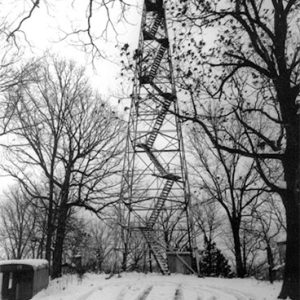 Sugarloaf Fire Tower
Sugarloaf Fire Tower  Tall Peak Fire Tower
Tall Peak Fire Tower 




Comments
No comments on this entry yet.